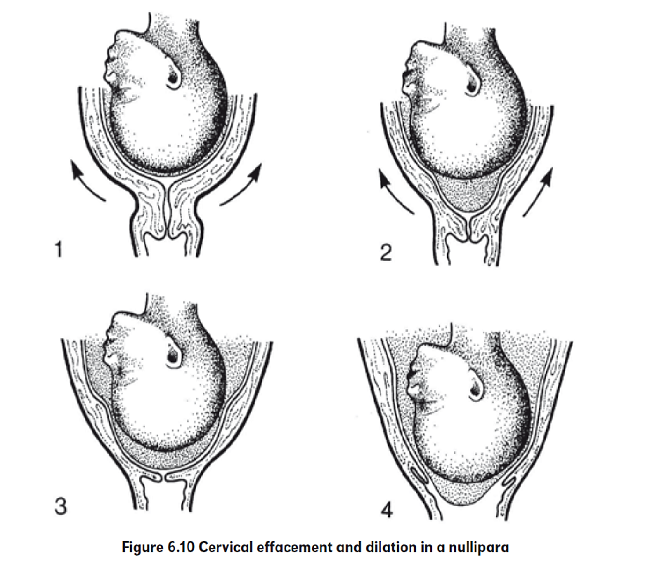Stages of Labour
The first stage of labour is divided into 3 phases.
 |
|
The second stage of labour is from full dilatation until birth of the baby. There may be a passive second stage in which further descent is awaited (especially if an epidural is used), followed by the active second stage where maternal effort (eg by Valsalva manoeuvre) is used to push the baby out through the pelvic outlet. The baby is said to be “crowning” as the head distends the vulva and perineum and the ‘crown’ of the head is easily visible.
The third stage is from birth of the baby until delivery of the placenta. The uterine muscles contract to stop blood loss once the placenta has separated and the placenta delivers within 60 minutes-usually quicker. This 3rd stage can happen by itself or can be actively managed by giving oxytocin, clamping the cord and using controlled cord traction to deliver the placenta. This reduces blood loss but on the other hand the medications used can cause nausea and vomiting and hypertension.
Here is another diagram from your book giving a pictorial representation of cervical effacement and dilation. |
 |



